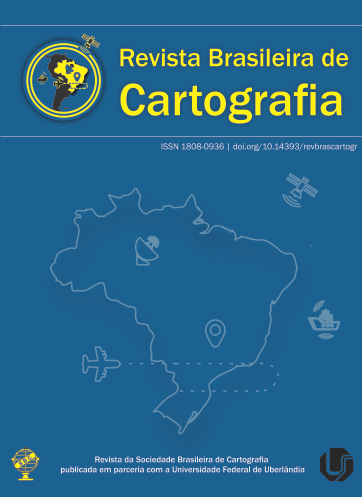Análise de técnicas de detecção de mudança para mapeamento de desastres com uso de dados de sensoriamento remoto
Main Article Content
Abstract
In recent years Brazil has suffered a series of environmental disasters that impaired its society, economy, and biodiversity in immeasurable levels. The use of remote sensing data rises as a fundamental source when analyzing environmental disaster impacts. Among several methods proposed in the literature, change detection techniques have shown potential use on environmental disaster investigations. In this context, this study presents an analysis with different change detection techniques applied to map the landscape modifications caused by recent environmental disasters in Brazil. The methods discussed in this paper are restricted to the unsupervised approach, which does not require a priori information about the data. Three applications were carried regarding the collapse that occurred in Mariana and Brumadinho dams, the state of Minas Gerais, and forest burning in the state of Mato Grosso. Images acquired by Landsat-8 and Sentinel-1 and 2 satellites were used in these studies. The results evidenced that such techniques, as long as parameterized and using favorable attributes, they can provide accurate maps regarding the changes from disaster events.
Downloads
Metrics
Article Details
Authors who publish in this journal agree to the following terms:
- Authors retain copyright and grant the journal right of first publication with the work simultaneously licensed under a Creative Commons Attribution License that allows others to share the work with an acknowledgment of the work's authorship and initial publication in this journal.
- Authors can enter into separate, additional contractual arrangements for the non-exclusive distribution of the journal's published version of the work (e.g., post it to an institutional repository or publish it in a book), with an acknowledgment of its initial publication in this journal.
- Authors are permitted and encouraged to post their work online (e.g., in institutional repositories or on their website) before and during the submission process, as it can lead to productive exchanges, as well as earlier and greater citation of published work (see "The Effect of Open Access").





